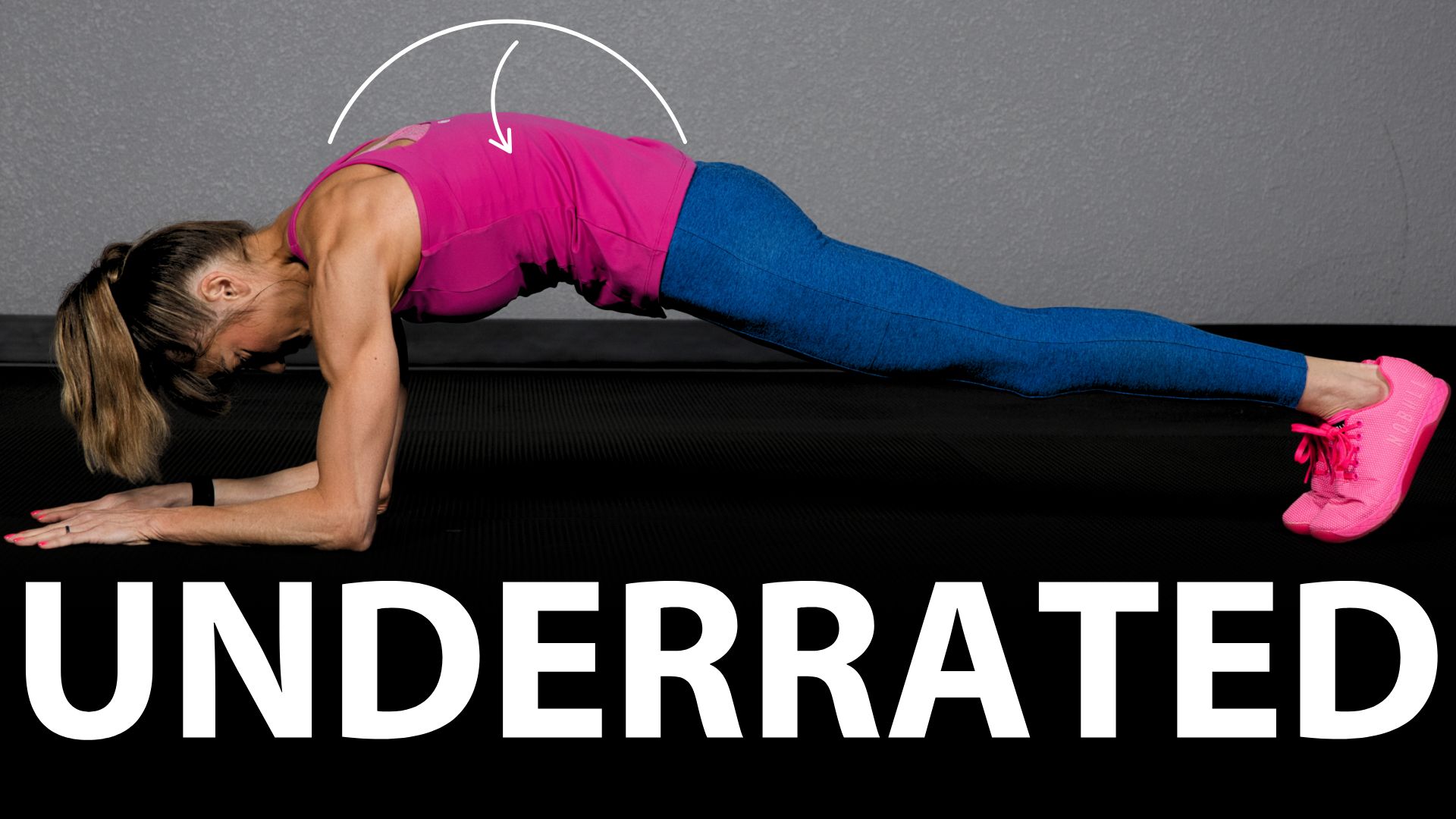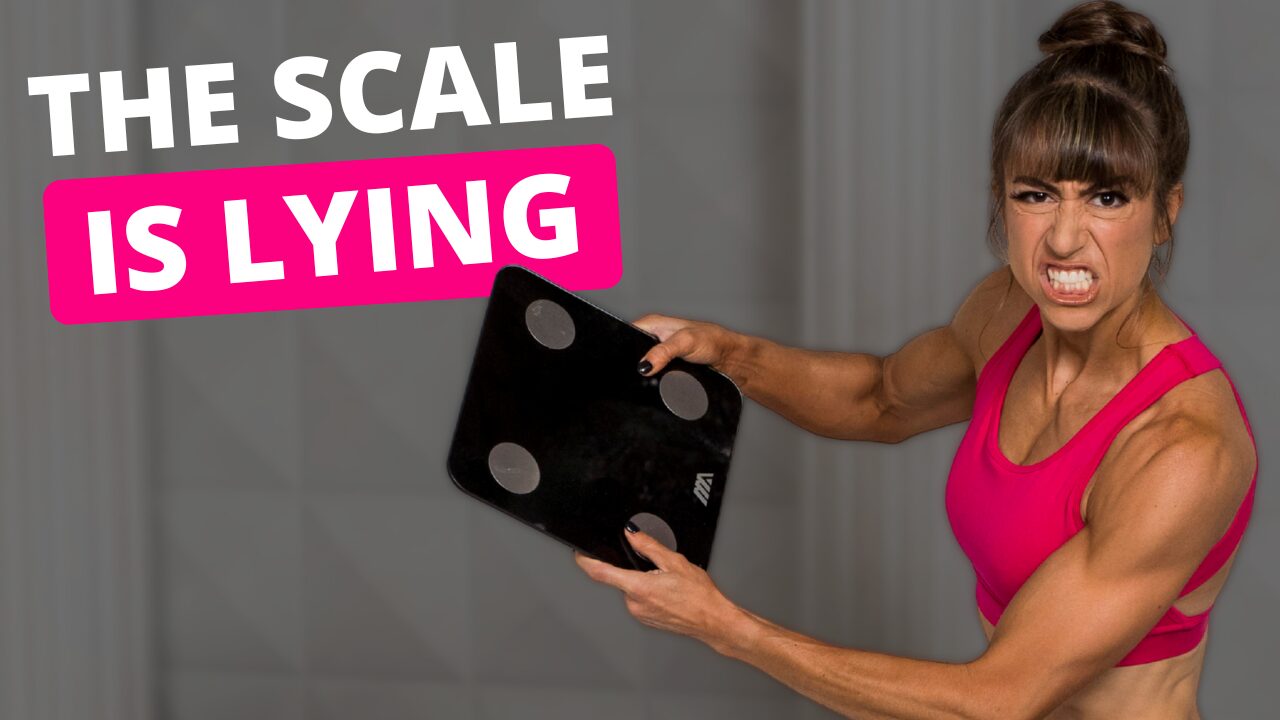Planks are an amazing core stability move.
And you’re never above that fundamental basic front plank.
However, too often we just stick with one variation of an exercise instead of seeing the opportunity in the different options.
To progress and build on your plank and core work, it isn’t just about holding longer.
It’s about holding harder and even slight changes in your posture or position that can help you see better results faster.
That’s why I want to share how one tweak to your plank can not only improve your shoulder stability and health by strengthening your serratus anterior, but also target your abs and especially your lower abs even more…
And this one tweak can make your planks look kind of weird…It even feels kind of wrong…

It’s round your back.
Yup.
Rounding your back.
By rounding your back to perform a plange plank, you can activate your serratus anterior or those muscles around your rib cage as well as your lower abs even more.
The key to targeting these two areas is in how you round your back which is why I first want to go over form and then ways to modify and even kick the plange plank up a notch to be even more challenging!
First, how do you properly round your back with the plange plank?
Start by setting up in that basic forearm front plank.
From this position focus on pushing the ground away with your forearms to pull your shoulder blades forward and around your rib cage.
This engages your serratus anterior through the protraction of your shoulder blades, which is your shoulder blades moving away from your spine.
With rounding your mid back up toward the ceiling, your chin should slightly tuck vs straining to keep your head straight out.
As you round, think about not only tucking your ribs toward your hips, but even slightly tucking your pelvis up toward your ribs.
This posterior pelvic tilt with the round is what really engages those lower abs and even your glutes more.
Use that mind body connection to focus on what you feel working and pulling your ribs in and down toward your belly button as your pelvis is pulled up and in toward your belly button as well.
This is a great way to focus on that ab engagement as you hold.
Too often we just go through the motions with exercises, mimicking form.
Instead we want to focus on holding harder to create that shakeage and get everything working.
This mind-body connection to better recruit muscles efficiently is what helps us improve our stability and strength.
So don’t focus on holding this plank just for longer – focus on holding harder.
To modify this move and really focus on that rounding and serratus anterior and ab engagement, start off an incline.
While you can do this move from your hands and knees in a variation I call the vomiting cat, an incline is best to train that full plank position and engage everything from your shoulders to your feet.
If you need to do the modification off your knees, remember to focus on that big round up and ab engagement. I call it the vomiting cat because you want to draw in your abs as if coughing up a hairball.
This ab engagement makes this move different than the cat cow stretch you may be used to doing.
Focus on that push of the ground away to round up as you tuck your pelvis toward your ribs.
If you have a bench or can use even the edge of a couch, table or stair, you can perform the full plank variation but with less resistance on your upper body which can help.
Now if you’re feeling the plange plank and want to progress it further, there are two options I really love and both can also be modified off an incline to add diversity to your routine.
One is the Dolphin Plank and the other is the Extended Plange Plank.
The Dolphin Plank challenges your core with not only the round up to engage your serratus anterior and lower abs, but also works your abs to fight extension as you lower your hips toward the ground.
It challenges your core with movement and really works your core with both flexion but also to fight extension of your spine.
To do this variation, you’ll perform that plange plank but then lower down through a front plank to drop your hips toward the ground. Your abs will have to fight to protect your spine from extending as you dip.
Then your abs will work to bring your hips back up and as you round back up.
The Extended Plange Plank on the other hand will challenge your serratus anterior and lower abs more by extending out the length of your plank.
Walk your feet back so your elbows are out in front of your shoulders.
Your lower abs will work to really fight that spinal extension and maintain a slight posterior pelvic tilt with a longer lever.
And your serratus anterior will be challenged by not only the protraction but also elevation of your shoulder blades because of the placement of your elbows out in front of your shoulders.
Just be careful you don’t end up shrugging or overloading your shoulders. This does require more shoulder strength and stability to do.
Both of these moves can be modified off the incline.
So while they are progressions of the basic plange plank, they can also be adjusted to be used by any fitness level!
Too often we feel if we need to modify moves that we’re stuck with only certain variations BUT that incline can be a great tool to help us ultimately regress to progress all the different planking postures.
Do not write off a move just because you can’t do the full variation yet!
And see opportunity in slight changes to your postures and positions with fundamental moves to tailor them to match your needs and goals.
Do you like the plange plank? Which variation will you try next?
For fun moves and workouts you can do anywhere, check out my Dynamic Strength program.
–> LEARN MORE



0 Comments